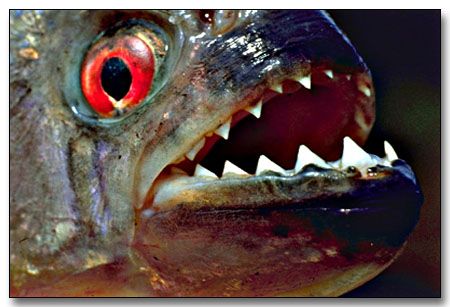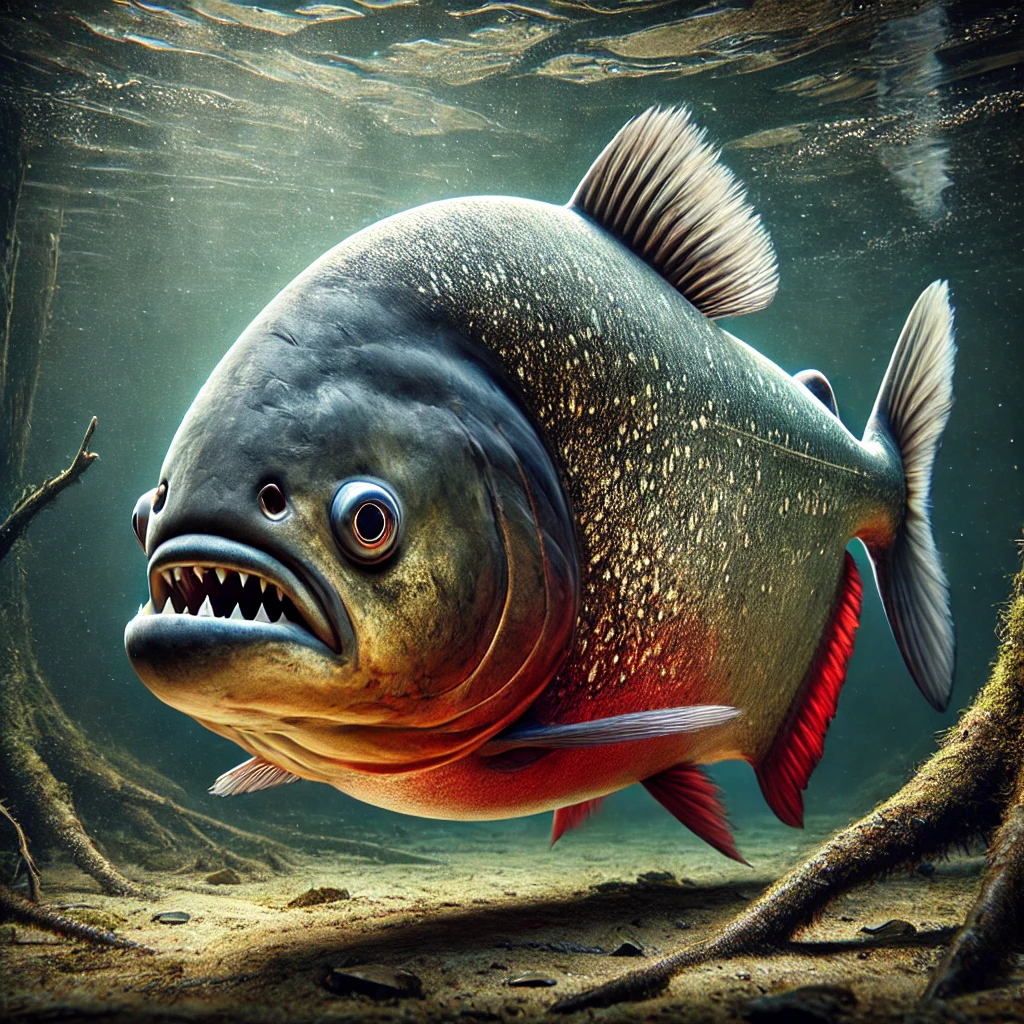The terror of the waters or a misunderstood fish?
Piranhas have always been the protagonists of terrifying legends and stories. Imagine the scene: a traveler ventures into the murky waters of the Amazon, unaware of the presence of a school of piranhas. In just a few minutes, the water turns red. But is this really how these infamous fish act?
Biology and behavior: the truth about piranhas
Piranhas belong to the Characidae family and are mainly found in the rivers and lakes of South America. Their reputation as ruthless predators is exaggerated: many species are omnivorous or even herbivorous, such as Tometes camunani, which primarily feeds on algae. Furthermore, the predatory behavior of piranhas is often linked to hunger and territorial defense rather than innate aggressiveness.
Scientific experiments and real-life stories
Scientists have studied the behavior of piranhas in the wild and in captivity, debunking many myths. For example, a study has shown that piranhas rarely attack live prey and prefer to feed on carcasses, playing a crucial role in the ecosystem as "scavengers" of the rivers. Other experiments have highlighted that piranhas are more timid than people think and tend to flee when faced with a potential threat.
On the other hand, there are documented cases of attacks, especially during the dry season, when resources become scarce. A famous incident occurred in 2011 in Argentina, where a group of swimmers was attacked by piranhas due to extreme heat and a lack of food.
Lesser-known species and their habits
Not all piranhas are fierce predators. Some, like the red-bellied piranha (Pygocentrus nattereri), are opportunistic feeders that vary their diet based on availability. Others, such as the black piranha (Serrasalmus rhombeus), are more solitary hunters, targeting weak or injured prey.
Piranhas in Amazonian folklore
In local cultures, piranhas are viewed with a mix of respect and fear. Some indigenous tribes consider them guardians of the waters, using them as a symbol of strength and cunning. Legends tell of water spirits that take the form of piranhas to punish intruders in sacred rivers.
Piranhas in cinema and literature
 Hollywood has reinforced the myth of the killer piranha with films like Piranha (1978) and its 2010 remake, portraying them as bloodthirsty creatures. In literature, adventure novels and stories have also exaggerated their ferocity, making them the stars of many memorable scenes.
Hollywood has reinforced the myth of the killer piranha with films like Piranha (1978) and its 2010 remake, portraying them as bloodthirsty creatures. In literature, adventure novels and stories have also exaggerated their ferocity, making them the stars of many memorable scenes.
Piranhas are among the most misunderstood fish on the planet. Far from being ravenous monsters, they play an essential role in the ecosystem and behave much less aggressively than commonly believed. Understanding their true nature means debunking false myths and appreciating the complexity of these fascinating inhabitants of South American rivers.
Sources:
Piranha Attack in Argentina (2013): An article from ABC News details a piranha attack on December 25, 2013, near Rosario, Argentina, where over 60 people were injured during a particularly hot day.
Piranha Attack in Brazil (2011): A report from MercoPress describes an incident in 2011 where thousands of piranhas attacked tourists at a popular river beach in Brazil, resulting in at least 15 injuries.
Piranha Attack in Bolivia (2011): Nature World News reports that in 2011, an 18-year-old in Bolivia died after jumping into a river infested with piranhas.
Piranha Shoaling Behavior: A study published by the National Center for Biotechnology Information examines the shoaling behavior of the Amazonian red-bellied piranha, suggesting that individual piranhas join shoals to reduce their risk of predation.
Evolutionary Adaptations of Piranhas: Research from the University of Missouri discusses the strong jaws and sharp teeth of piranhas, suggesting unique evolutionary adaptations.
Breeding Behavior of Red-Bellied Piranhas: A study available on ResearchGate details the breeding behavior of Pygocentrus nattereri in natural settings.
Piranha Feeding Frenzies: An article from the Harvard Gazette explores feeding frenzies involving hundreds of piranhas, capable of reducing prey to bone in minutes.








Leave a Comment